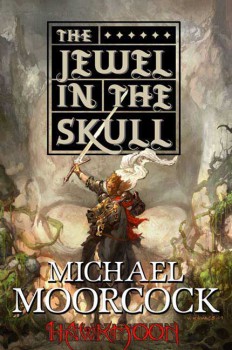A Look at The Night Life of the Gods (1931)

THE NIGHT LIFE OF THE GODS
by Thorne Smith
Published by Dodo Press, Copyright 1931
Reviewed by Mark Rigney
In searching for the earliest inspirations for sword and sorcery, one perfectly reasonable starting point would be Ancient Greece. The Grecian stories, after all, have survived in marked detail, and the adventures themselves are epic in scope, bloody to a fault, and literally crawling with terrifying beasties. Adapting those tales has been the work of many a writer, including (James) Thorne Smith, a massively successful fantasist now largely forgotten, who posed himself the question, “What if someone could turn the various Olympian statues in the Big Apple’s museums into flesh and blood?” Smith’s answer was The Night Life Of the Gods (1931), a cheerful Shaggy Dog of the New York variety, and a fine example of a book that no modern publishing house would touch with a thirty-nine-and-a-half-foot pole.
If Thorne Smith’s name is sounding suspiciously familiar, perhaps it should, as he is the earnest scribbler behind Topper (1926), the very same Topper in which Cary Grant later starred (as a ghost), and which eventually became a staple of early television, featuring Leo G. Carroll and sponsored by Jell-O. (Night Life Of the Gods also found its way to the silver screen; the 1935 production, starring Alan Mowbray, is said to be (deservedly) buried in a vault at UCLA.) As a book, Night Life, like virtually all of Smith’s fantastical, debauched novels, was wildly popular. That it has not remained so is perhaps a testament to the complete inability of post-modern Homo sapiens to imbibe anywhere close to the quantity of alcohol consumed by Smith’s louche, soused-to-the-gills characters.
Let me put it more bluntly: a truly astounding amount of liquor gets dispatched in the course of this book. Given that the action takes place smack in the midst of Prohibition, an era when American breweries were busily hawking malt syrup just to say alive, the book’s blood alcohol content becomes all the more astounding.
 The White Raven
The White Raven Midwinter
Midwinter Last week Tor.com ran a terrific article by Michael Moorcock about the origins of his (recently reprinted) Hawkmoon stories. In ‘
Last week Tor.com ran a terrific article by Michael Moorcock about the origins of his (recently reprinted) Hawkmoon stories. In ‘ Occasionally a bit of book-to-film news seems to come out of nowhere and create some genuine surprise. So, amidst reports of this-or-that being remade, rebooted, retread, reimagined, or reduxed (what is it this week? Lord of the Ring Tones? Aliens vs. Predator vs. Chucky vs. Tony Montana? T.J. Hooker on Mars?) it seems there is actually an original, never done before, not part of a hot franchise redo, SF book adaptation slated for television. Gordon R. Dickson’s Childe Cycle, better known by the name of the first book in the series, Dorsai!, is being made into a live action series by MDR productions (
Occasionally a bit of book-to-film news seems to come out of nowhere and create some genuine surprise. So, amidst reports of this-or-that being remade, rebooted, retread, reimagined, or reduxed (what is it this week? Lord of the Ring Tones? Aliens vs. Predator vs. Chucky vs. Tony Montana? T.J. Hooker on Mars?) it seems there is actually an original, never done before, not part of a hot franchise redo, SF book adaptation slated for television. Gordon R. Dickson’s Childe Cycle, better known by the name of the first book in the series, Dorsai!, is being made into a live action series by MDR productions ( A while ago
A while ago  Yes indeed, Black Gate has carved out its
Yes indeed, Black Gate has carved out its  If the constant litany of human suffering and human stupidity that is the 24 hour news cycle has got you down (gee, why would it?) then have a look at
If the constant litany of human suffering and human stupidity that is the 24 hour news cycle has got you down (gee, why would it?) then have a look at  I just saw some news via SFSignal and SciFi Squad about
I just saw some news via SFSignal and SciFi Squad about  To write something on the occasion of Robert E. Howard’s birthday is a bit, well, intimidating. As imposing a presence as the Texan was in life, his reputation a century on has approached the status of myth. Not only that, but his work is the subject of formidable scholarship of the sort seen over at
To write something on the occasion of Robert E. Howard’s birthday is a bit, well, intimidating. As imposing a presence as the Texan was in life, his reputation a century on has approached the status of myth. Not only that, but his work is the subject of formidable scholarship of the sort seen over at